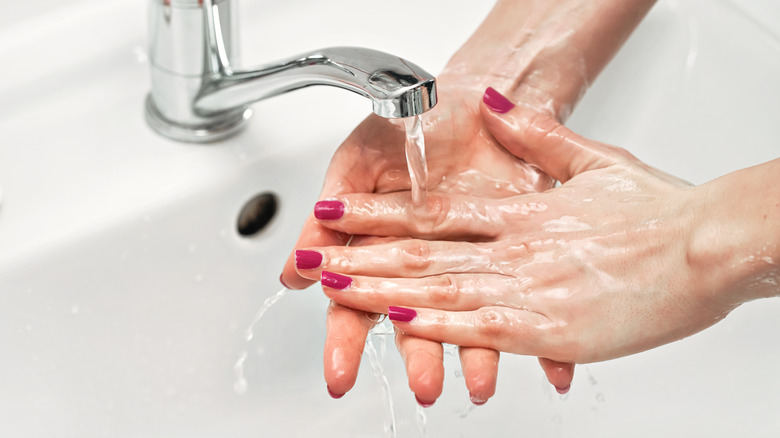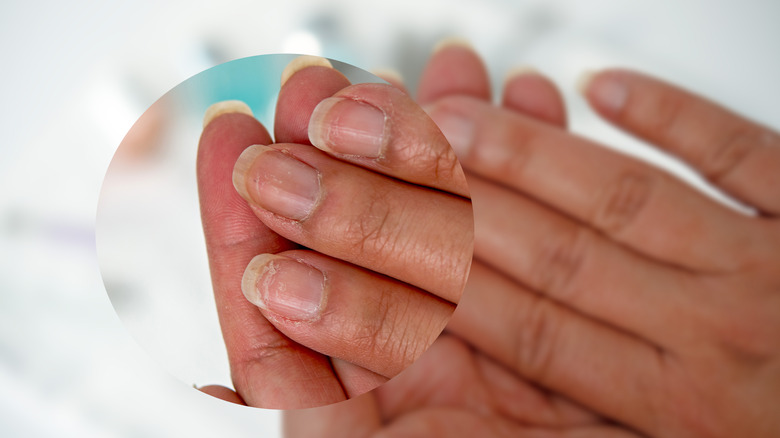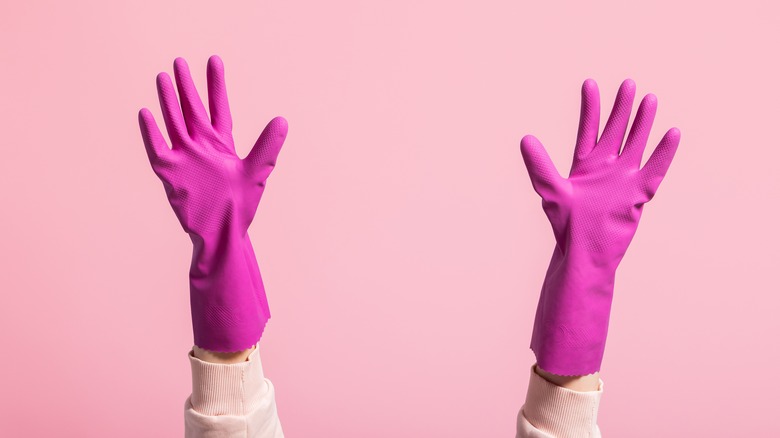Does Water Weaken Your Nails?
If you're into your nails, you probably know the many no-nos that come along with properly taking care of them. From biting and scraping the fingernails to overdoing the cuticles and manicures, there are things you just shouldn't do if you want healthy, strong nails. And the truth is, nail health goes beyond just having pretty hands.
According to the Centers for Disease Control and Prevention, bacteria and germs thrive in dirty and unkept fingernails, causing infections to spread. Therefore, it's essential to keep your nails healthy and engage in proper nail hygiene, which includes giving them a good scrub down every time your hands are met with soap and water. Yes, every time!
Speaking of water — is there such a thing as too much when it comes to nail health? While it's true that various factors, like exposure to too much acetone or acrylic nail chemicals (per Real Simple), play a role in brittle nails, you may wonder if plain ol' H2O is the sneaky culprit leading you to weak and damaged nails.
Yes, water weakens your nails. Here's how
The nails have a hard exterior, making many people believe they are tough, strong, and capable of protecting your hands from anything. However, just like most things with a rugged outside, they are actually pretty sensitive on the inside. "Much like the skin, nails can also absorb water, which contributes to the weakening of the bonds in your nails over time," dermatologist Dr. Rachel Nazarian told The Zoe Report.
Therefore, too much water contact can be damaging to the nails. According to Dr. Dana Stern in Nails Magazine, fingernail cells soak up water easily, so much like a sponge, they swell when they're exposed to water and shrink when they dry out. As a result, the cells get stressed, which then makes them weaker and brittle. While occasional contact with water is fine, constant participation in water activities like swimming and bathing can contribute to fragile, damaged nails.
If you notice your nails are soft and peeling, that may be a sign of too much water exposure. An unsightly condition called "green nail syndrome" may also be present, which normally presents as a painless greenish hue underneath the nail that occurs as a result of a bacterial infection that can be contracted in many water sources (per The American Osteopathic College of Dermatology). Being able to tear your nail easily may also indicate that your nails have been weakened by water.
How to prevent and treat water-damaged nails
While it's not entirely reasonable to avoid water at all times, as it's an essential part of daily life, there are ways you can prevent your nails from degrading when engaging in chores and other activities. Healthline recommends reaching for a pair of rubber gloves when doing any task around the home that involves water.
Also, nail polish is a great barrier for swimmers and bath lovers, as it "helps to reinforce the weak bonds between the cells within the nail," according to board-certified dermatologist Dana Stern, speaking with Nails Magazine. Just be careful not to peel any polish or gel off your nails to avoid further damage.
Fixing and preventing brittle nails won't happen overnight, but there are things you can do to get them back on a healthy track. Reach for hydrating nail products and oils to bring nourishment back into your nails and cuticles (per Bustle). Have your manicures done with a light hand to avoid roughness and injuries, and even though you may not want to hear it, lay off manicures every now and then to give your natural nails a much-needed time out. Healthy nails are beautiful nails, after all.


